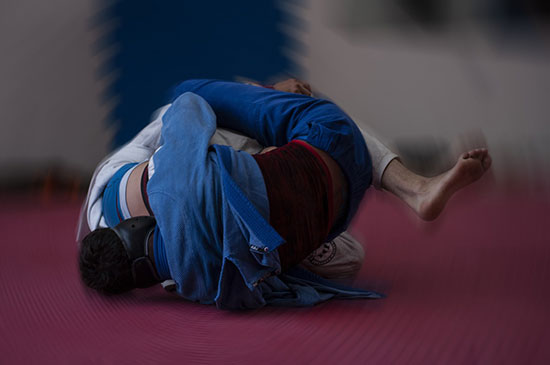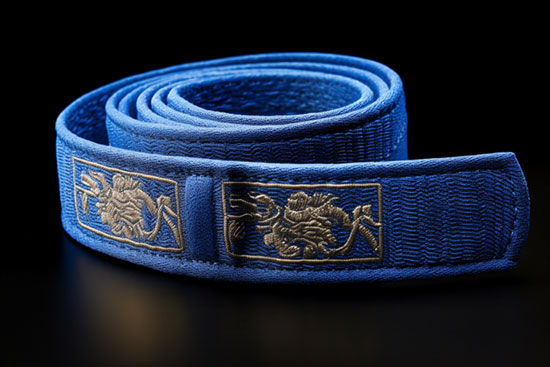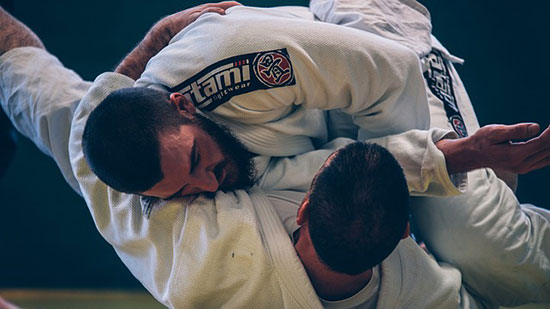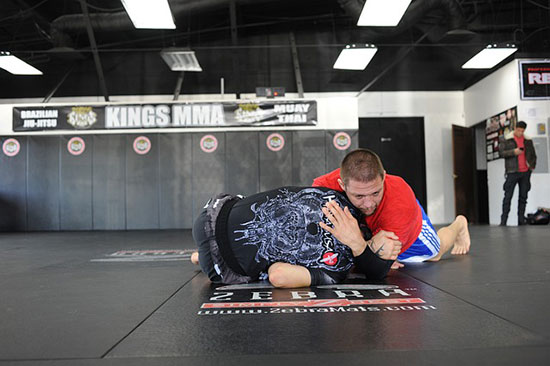When it comes to Brazilian Jiu-Jitsu (BJJ), the art of grappling and submission, practitioners are constantly developing and refining techniques to gain an advantage over their opponents. One such technique that has gained attention and popularity in recent years is the BJJ Buggy Choke.
This unique and effective chokehold has proven to be a reliable submission move, and it has been seen in various competitive BJJ matches around the world.
Contents
Understanding the BJJ Buggy Choke
The BJJ Buggy Choke is a highly effective submission technique that primarily targets the opponent’s neck area.
It falls under the category of “blood choke” holds, which aim to restrict the flow of blood to the brain and induce unconsciousness.
Unlike joint locks or other forms of submissions that can cause severe pain or physical damage, the Buggy Choke is a more controlled and less harmful way to force an opponent into submission.
The Mechanics of the Buggy Choke
The Buggy Choke is executed by leveraging the use of the gi, the traditional uniform worn in BJJ, to create a tight grip around the opponent’s neck.
The choke utilizes the collar of the gi to apply pressure on the carotid arteries, interrupting the blood supply to the opponent’s brain. This lack of blood flow can lead to a rapid loss of consciousness, forcing the opponent to tap out and concede the match.
The Importance of Proper Technique
Executing the Buggy Choke properly is crucial to its success. It requires a firm grip on the collar of the opponent’s gi, positioning the hands and arms in specific ways to maximize the compression and minimize any potential escape routes for the opponent.
The precise application of pressure is essential as it directly affects the efficiency and effectiveness of the chokehold.
Implementing the BJJ Buggy Choke
Now that we understand the mechanics behind the BJJ Buggy Choke, let’s explore the step-by-step process of implementing it in a BJJ match.
1. Establish a Solid Position
Before attempting the Buggy Choke, one must secure a favorable position. Common positions from which the choke can be executed include side control, mount, or back control. It is essential to have a stable base and maintain control over the opponent’s upper body.
2. Secure a Gripping Position
Once in a good position, the practitioner needs to establish a grip on the opponent’s gi collar. The grip should be deep and secure, allowing for better control and pressure application. This grip will serve as the foundation for the subsequent steps of the choke.
3. Establish Control of the Opponent’s Arm
Before fully committing to the Buggy Choke, it is crucial to control the opponent’s arms. This prevents them from defending the choke or escaping by using their own techniques.
Various arm control techniques, such as arm traps or arm immobilization, can be employed to ensure control over the opponent’s arm movement.
4. Position and Apply Pressure
With a solid grip on the opponent’s collar and control over their arms, the practitioner must position their body accordingly. This entails applying pressure by leaning and driving forward while maintaining control.
This pressure forces the collar into the opponent’s neck, compressing the carotid arteries and restricting blood flow, ultimately leading to submission.
5. Fine-Tune and Adjust
The Buggy Choke is not always a one-size-fits-all technique. Depending on the opponent’s reaction and resistance, adjustments may need to be made during the application of the choke. Fine-tuning the pressure, grip, or body positioning can optimize the effectiveness of the chokehold and increase the likelihood of a successful submission.
Successful Applications of the BJJ Buggy Choke
Over the years, many notable BJJ practitioners have successfully applied the Buggy Choke in various competitions. Let’s take a look at a few examples:
Example 1: Marcelo Garcia vs. Kron Gracie
In a highly acclaimed match at the ADCC Submission Wrestling World Championship, BJJ legend Marcelo Garcia utilized the Buggy Choke to secure victory against the highly skilled Kron Gracie.
With precise technique and incredible timing, Garcia transitioned to a dominant position and effortlessly applied the Buggy Choke, forcing Gracie to tap.
Example 2: Marcus Buchecha vs. Roger Gracie
In a historic showdown between two BJJ icons, Marcus Buchecha faced Roger Gracie at the Brazilian Jiu-Jitsu World Championship.
Buchecha shocked the crowd with his expert execution of the Buggy Choke, catching Roger Gracie off guard and forcing him into submission. This victory solidified Buchecha’s reputation as one of the top practitioners of the Buggy Choke.
The Effectiveness of the BJJ Buggy Choke
The BJJ Buggy Choke’s growing popularity is a testament to its effectiveness as a submission technique.
Its numerous successful applications in high-level BJJ competitions speak volumes about its reliability and power in forcing opponents to concede the match. The Buggy Choke offers multiple advantages, including:
- Less reliance on physical strength: Unlike some other techniques that heavily rely on brute force, the Buggy Choke relies more on leverage, technique, and precise application, making it accessible to practitioners of all body types and sizes.
- Control and safety: The Buggy Choke is considered a relatively safer submission technique compared to joint locks or other aggressive moves that can cause injury. It provides a controlled way to force an opponent into submission without inflicting significant physical harm.
- Versatility: The Buggy Choke can be applied from various positions, such as side control, mount, or back control, giving practitioners the flexibility to utilize it in different situations during a match.
Conclusion
The BJJ Buggy Choke is a highly effective and reliable submission technique that has become increasingly popular in the world of Brazilian Jiu-Jitsu. Its unique mechanics, reliance on leverage and technique, and successful applications by top practitioners make it an essential tool in every BJJ practitioner’s arsenal.
Whether you are a seasoned competitor or a beginner, mastering the Buggy Choke can significantly enhance your grappling skills and increase your chances of success in BJJ matches.
Remember, practice, precision, and proper technique are key to successfully applying the Buggy Choke and emerging victorious in the realm of BJJ.




